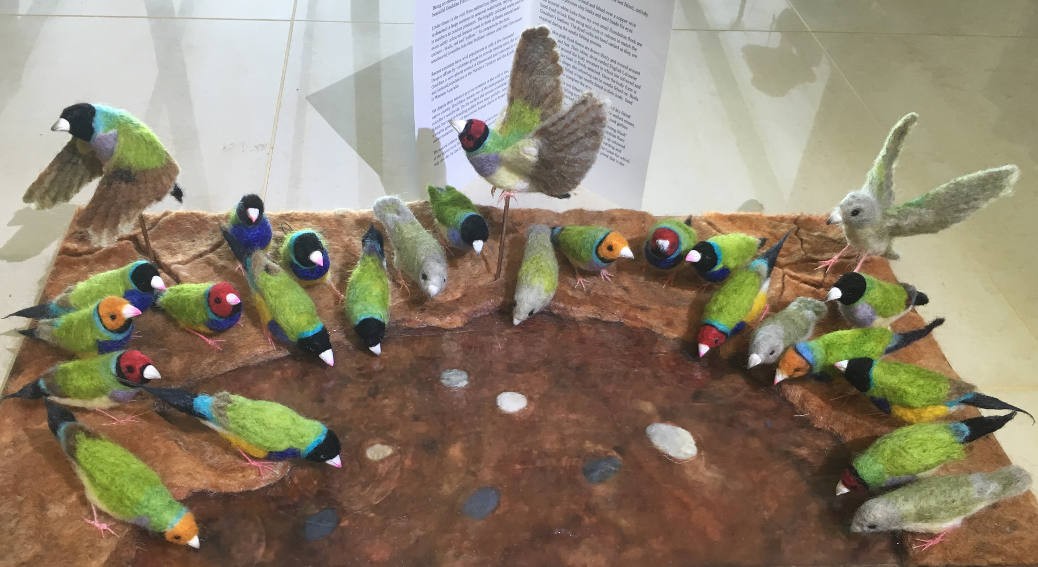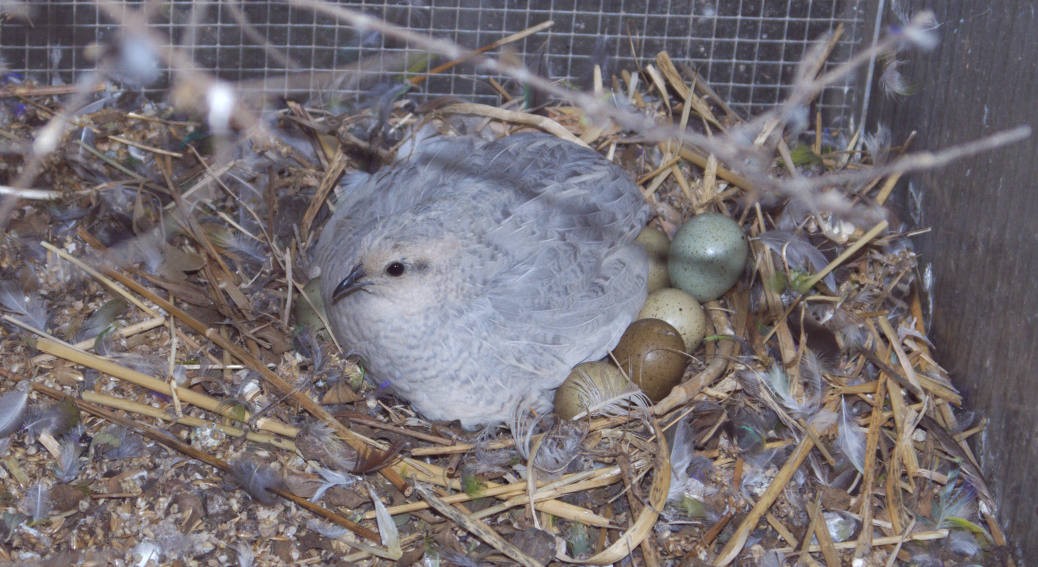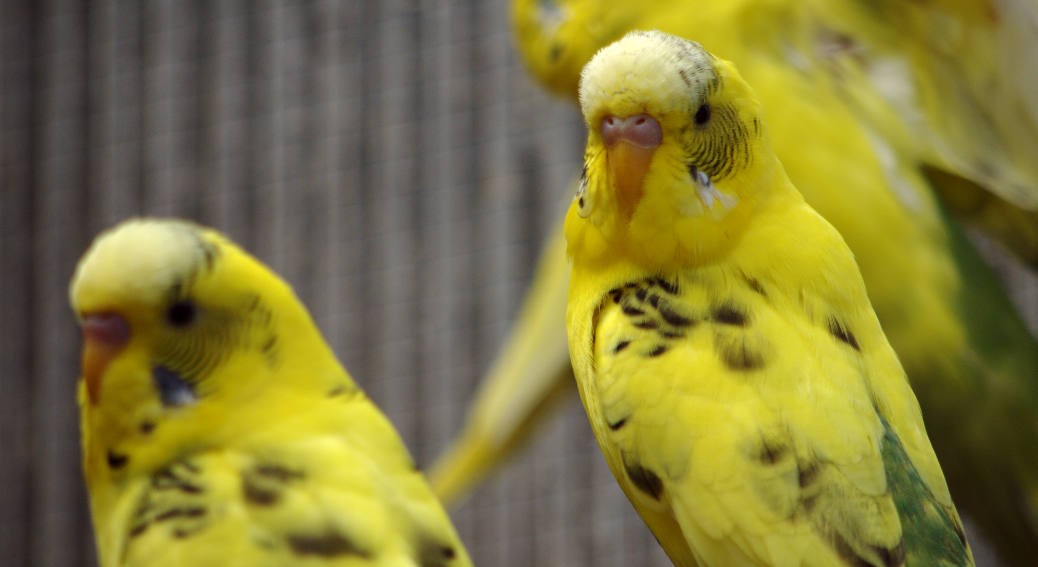The Waterhole was inspired by the beautiful Australian Gouldian Finch, and created as an entry in the 2017 Bendigo Australian Sheep and Wool Show where it won it’s class. Continue reading The Waterhole
All posts by KathyW
King Quail
King Quail would have to be some of the most daft, occasionally infuriating but at the same time cute and endearing ground dwelling birds. King Quail come in a variety of colours, from silver through cinnamon to the normal browns and blue-grey, rusty red.
They can breed like crazy, but in a big aviary the chick mortality rate is high as they struggle to keep up with fast moving parents.
Moving chicks and parents to small cages when the chicks hatch has a much higher success rate for chicks reaching adult-hood.
King Quail chicks when newly hatched can walk straight through standard bird mesh, and really require “mouse-mesh” – 6.5mm x 6.5mm galvanised wire mesh, or closely spaced finch cage fronts to keep them contained. Similarly, any gap big enough for a finger to get through has to be plugged up.
Catching King Quail is not as straightforward as it seems. For a start they run fast. As adults they are quite capable flyers and will launch themselves into the air to evade nets. In small cages, even in transport boxes, their panic response is so strong they can physically injure themselves hitting their heads on the top of the box or cage.
However, their parenting instincts are delightful to watch, as parents peck, catch and offer the chicks tasty tid-bits. Occasionally the cock may attack his own chicks, but that has not been my experience. Older, mature siblings however are a serious threat to hatchlings.
It is possible to become quickly over-run with quail. The recommended arrangement is a maximum of two hens to one cock bird. More than one cock per aviary inevitably leads to fighting and deaths amongst the males. Only occasionally have family groups, parents and multiple brothers and sisters, been able to peacefully co-exist in the one aviary. Multiple males can be kept together as long as there are no females for them to fight over. Females can be kept together without any problems.
Always be careful introducing any new quail to an established group. Defending the established “pecking-order” can be quite vicious with both males and females.
Some breeders claim you should never keep quail with finches. Others say there is no problem, and young, newly fledged finches will often seek the quails for warmth in the first few days out of the nest. I have observed the latter with young Gouldians and King Quail.
Budgies
We’ve been breeding Danish Recessive Pied Budgies for decades. Our birds are throw-backs to 35 years ago when a breeder of pieds was off-loading his “non-pied” birds. After 15 years of only throwing normals, opalines, grey-wings and the occasional albino or lutino, pied variants started to appear. Selective breeding in the subsequent years strengthened the strain to the stage where almost all our birds are visual Danish Recessive pieds, or carrying the gene.
We have carefully selected any newly introduced blood to exclude some traits, for example spangles, undesirable in our breeding program.
Attempts to increase the size of the birds in the early days were unsuccessful as the big, buff-head english style birds, or “meat-birds” as I refered to them, were too fragile and unfit for our all year open flight aviaries. More recent attempts have been successful with some selective matings, and the offspring have retained their hardiness and increased in size.
There are no plans to further “improve” our birds size, as their laboured, noisy, slow flying compared to the wild-type sized birds makes that trait undesirable for open flight aviary birds in our opinion.
Many of our birds are carrying the grey gene, which is reflected in the brilliance of their ground colours – white that is like arctic snow, and glowing buttercup yellows.


